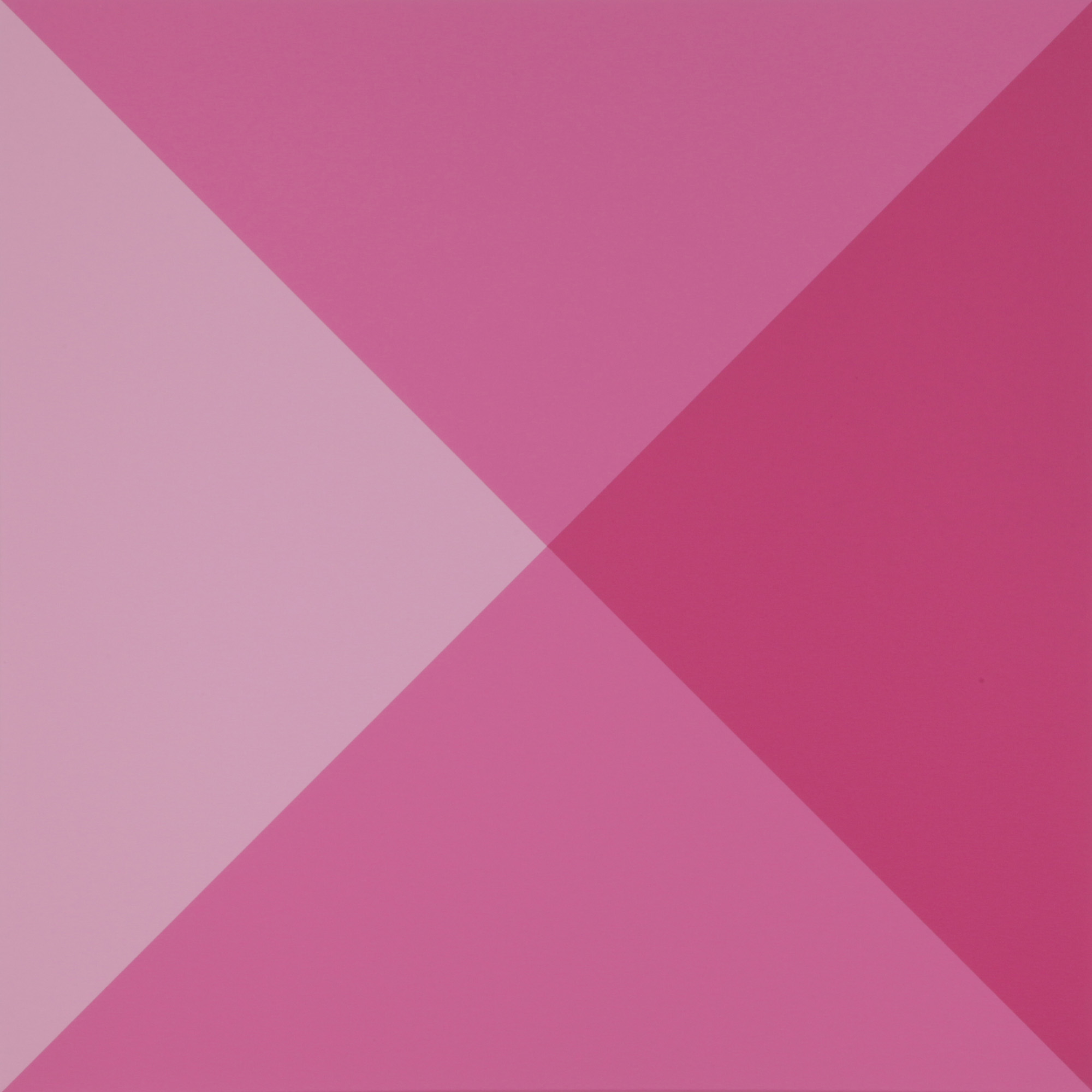A 1991 graduate of Geneva’s École supérieure d’arts visuels, Francis Baudevin has been developing a body of work that is a pictorial reappropriation of the motifs of industrial design. Since the mid-1980s, the artist has been creating paintings from compositions found in the world of packaging – for food and pharmaceuticals – logos, commercial signs or album covers.
Taking his motifs from our daily visual world, Baudevin interprets its distinctive signs according to a working method he elaborated in 1987. First, he removes the text or any other clue that would make it possible to recognise the origin of the sampling. Then, after enlarging the source image by ten or a multiple of ten, he makes the graphic symbol the main motif in a geometrical painting.
The artist uses available pre-existing “ready-to-use” forms to create a pictorial work that is part of the genealogy of geometrical painting and extends the questions raised by that approach. Through his method, he cancels out any and all attempts, however slight, at a commercial use for the motif, a motif that becomes once again pure composition, an arrangement of form and colour that has been emptied of all meaning, totally voided of its function to sell and foster consumption.
In this way Baudevin reveals the passages, circulations and interpenetrations between the complementary fields of pictorial and graphic arts. The complicity of the two domains has often been pointed out, more especially in Switzerland, where recognised artists, in the tradition of Max Bill or Richard Paul Lohse, often work as both graphic artists and painters, like Baudevin himself. Baudevin’s work highlights the force with which pictorial trends that took shape with the avant-gardes – Suprematism and Constructivism, but also Minimal Art, Pop and Geometrical Abstraction – overwhelmed our visual world and inspired domains that are collateral to art, i.e., advertising, the mass media and visual communications.
Taking his motifs from our daily visual world, Baudevin interprets its distinctive signs according to a working method he elaborated in 1987. First, he removes the text or any other clue that would make it possible to recognise the origin of the sampling. Then, after enlarging the source image by ten or a multiple of ten, he makes the graphic symbol the main motif in a geometrical painting.
The artist uses available pre-existing “ready-to-use” forms to create a pictorial work that is part of the genealogy of geometrical painting and extends the questions raised by that approach. Through his method, he cancels out any and all attempts, however slight, at a commercial use for the motif, a motif that becomes once again pure composition, an arrangement of form and colour that has been emptied of all meaning, totally voided of its function to sell and foster consumption.
In this way Baudevin reveals the passages, circulations and interpenetrations between the complementary fields of pictorial and graphic arts. The complicity of the two domains has often been pointed out, more especially in Switzerland, where recognised artists, in the tradition of Max Bill or Richard Paul Lohse, often work as both graphic artists and painters, like Baudevin himself. Baudevin’s work highlights the force with which pictorial trends that took shape with the avant-gardes – Suprematism and Constructivism, but also Minimal Art, Pop and Geometrical Abstraction – overwhelmed our visual world and inspired domains that are collateral to art, i.e., advertising, the mass media and visual communications.












